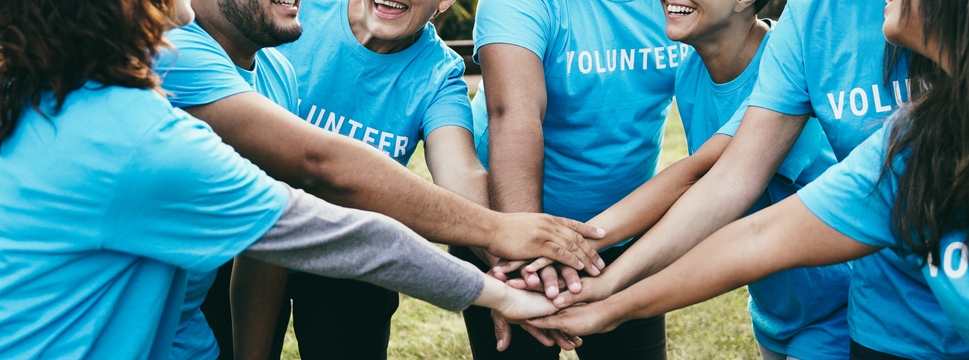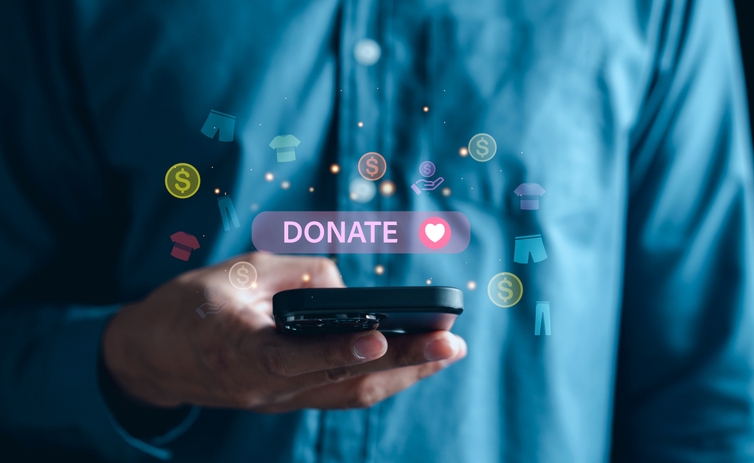Charity Event Planning for Beginners: From Idea to Impact in 10 Steps
Learn essential steps for planning impactful charity events. From brainstorming to execution, get practical tips to make your vision a reality. Read more!

Charity Event Planning 101: Building a Successful Fundraising Campaign
Planning a charity event is one of the most rewarding ways to contribute to your community, raise awareness for important causes, and inspire donors to take meaningful action. But if you’re new to the event planning process, the road from idea to impact can feel overwhelming.
How do you set realistic fundraising goals? What type of fundraising strategy should you use? How can you secure major donors, attract corporate sponsors, and ensure your event runs smoothly from start to finish?
This comprehensive guide breaks down every step of planning a successful fundraiser—from building your first fundraising campaign to cultivating donor relationships and generating significant revenue for charitable organizations.
Charity Event Planning 101: Where to Start
Before diving into logistics, clarify why you are hosting the event. For nonprofit organizations, successful fundraising events are not only about raising money, but also about strengthening donor engagement, connecting with community supporters, and ensuring long-term fundraising success.
Ask yourself:
- What is the purpose of this event? (raising funds, recruiting volunteers, cultivating major donors)
- How will this event align with your organization’s mission?
- What does success look like? (fundraising progress, number of event attendees, new donors acquired)
A clear vision will guide your event planning process, help attract board members and corporate sponsors, and maximize fundraising potential.
Step 1 – Define Your Mission and Fundraising Goals to Inspire Donor Engagement
Every successful fundraising event starts with clarity of purpose. As an event organizer working in nonprofit event planning, you need a mission statement that answers: Why are we hosting this event, and what impact do we want to achieve?
How to Craft a Mission Statement
- Tie it to your nonprofit’s larger vision – For example, if your organization fights food insecurity, your mission for this specific event could be: “Raising money to provide 50,000 meals for underserved families in our community.”
- Make it concise and memorable – Event attendees, sponsors, and volunteers should be able to repeat it easily.
- Ensure alignment with board members and community leaders – Their approval strengthens credibility and builds early buy-in.
Setting SMART Fundraising Goals
Your fundraising strategy should use the SMART framework:
- Specific – State exactly what you want to achieve.
- Measurable – Define how you will track progress (e.g., dollars raised, new donors recruited).
- Achievable – Balance ambition with realism based on past events.
- Relevant – Ensure the goal supports your nonprofit’s mission.
- Time-bound – Set a deadline, typically the event date.
Example Goals:
- Raise $50,000 through a hybrid event (benefit concert + online peer to peer campaign).
- Recruit 100 new donors and raise awareness for climate action through a community fundraiser. You can also use sustainability ideas to stick to the theme of the event.
- Secure 5 corporate sponsorships to cover 40% of the event budget.
Executional Tips
- Benchmark past events – Analyze previous fundraising campaigns to see how much was raised and what worked.
- Segment goals – Break down by funding source (donations, ticket sales, in kind donations, sponsorships).
- Involve major donors early – Share the mission and fundraising goals with them first; they often set the tone for others.
- Track in real time – Use an event management platform to monitor donor engagement and fundraising progress as you move closer to your goal.
Why this matters: A clear mission and well-structured fundraising goals help you communicate value to corporate sponsors, inspire donors, and ultimately raise more funds for your cause.

Step 2 – Choose the Right Event Format to Connect With Your Target Audience and Corporate Sponsors
The format of your nonprofit events will determine your fundraising potential, target audience engagement, and event logistics. The right choice can maximize participation and ensure your event runs smoothly.
Popular Charity Event Formats (and When to Use Them)
1. Benefit Concerts
- Best for: Large audiences, raising awareness, attracting corporate sponsorships.
- Revenue sources: Ticket sales, live donations, branded activations.
- Example: Partner with local artists and community leaders, with corporate sponsors covering venue costs.
2. Charity Galas
- Best for: Cultivating major donors, capital campaigns, and inspiring charitable giving.
- Revenue sources: Table sales, auctions, pledge drives.
- Execution tip: Use an event management platform for smooth event registration and seating arrangements.
3. Fun Runs & Walkathons
- Best for:
- Revenue sources: Participant registration fees, pledges per mile, in kind donations.
- Example: Encourage families, schools, and local businesses to form teams and compete in fundraising challenges.
4. Hybrid Events
- Best for: Expanding reach beyond your immediate community, engaging both in-person and online event attendees.
- Execution tip: Use digital streaming tools integrated with your event management platform to track online giving.
5. Auctions & Raffles
- Best for: Generating significant revenue quickly, engaging attendees during downtime.
- Execution tip: Secure in kind donations from established companies and local businesses (gift cards, travel packages, exclusive experiences).
Choosing the Right Format – Key Considerations
- Fundraising Campaign Objective – Are you raising funds, recruiting new donors, or cultivating major donors?
- Target Audience – What motivates your audience: community experiences, exclusive galas, or digital engagement?
- Event Budget – Galas and concerts require higher upfront costs, while raffles or fun runs can be more cost-effective.
- Sponsor Fit – Established companies often prefer galas, while local businesses may prefer sponsoring community events.
- Logistics & Resources – Do you have enough volunteers, technology, and staff to manage the event format effectively?
Executional Checklist
- Align event format with mission and fundraising goals.
- Secure corporate sponsorships or local partnerships to offset costs.
- Build an event budget with detailed expense projections for each format.
- Leverage your event management platform to manage ticketing, donor data, and fundraising progress.
- Design event programming that matches donor expectations (e.g., entertainment for concerts, networking for galas).
Why this matters: Choosing the right format sets the foundation for a successful campaign, helps you maximize fundraising potential, and ensures your fundraising efforts are aligned with both donor expectations and organizational capacity.
Step 3 – Build a Detailed Event Budget to Maximize Fundraising Success
A detailed budget is the backbone of nonprofit event planning. It ensures your fundraising efforts stay on track, your event runs smoothly, and you maximize fundraising potential without overspending. You must know about the important matrix which will define the success of your event before getting into budget planning.
Key Budget Categories to Include:
- Venue & Event Logistics – rental fees, permits, AV setup, security, and insurance.
- Catering & Décor – food, beverages, décor, rentals (tables, chairs, linens).
- Event Programming – speakers, entertainment, benefit concerts, and activities.
- Marketing Materials & Marketing Channels – social media ads, posters, video production, PR.
- Event Management Platform & Registration Tools – CRM, event registration software, peer-to-peer campaign platforms.
- Volunteer Support & Staff Costs – stipends, transportation, and training materials.
- Contingency Fund – reserve at least 10% for unexpected costs.
Executional Tips:
- Track In Kind Donations: List them in your budget (e.g., donated catering, photography, venue space). This reduces expenses while boosting fundraising success.
- Use an Event Management Platform: Software helps track spending, adjust allocations, and monitor ROI.
- Match Budget to Fundraising Goals: If you aim to raise $100,000, your event budget should not exceed ~30% of that unless major donors or corporate sponsorships are secured.
- Collaborate with Community Leaders: They may provide cost-sharing opportunities or resources at discounted rates.
Pro tip: Present a transparent budget breakdown to board members and corporate sponsors—this builds trust and can unlock additional funding or in-kind support.
Step 4 – Secure Corporate Sponsors and Partnerships That Strengthen Donor Relationships
Corporate sponsorships and local businesses can transform an event’s financial viability by providing both funding and visibility. Sponsors also enhance your credibility, especially with new donors.
How to Approach Sponsors Successfully:
- Research & Match Values – Identify companies with CSR programs aligned with nonprofit events like yours. For example, a fitness brand is perfect for a charity fun run.
- Highlight Past Events – Use data: attendance numbers, fundraising progress, media coverage. Show them how sponsorship led to fundraising success in similar campaigns.
- Create Tiered Sponsorship Packages – Offer options like:
- Gold: Logo on stage backdrop, keynote mention, prime booth space.
- Silver: Logo on event registration page + mentions in marketing channels.
- Bronze: Social media recognition and printed marketing materials.
- Leverage Board Members – Ask them to introduce you to corporate sponsors and established companies they’re connected with.
- Emphasize Community Impact – Stress how sponsorship supports nonprofits, raises awareness, and strengthens donor relationships.
Executional Tips:
- Always send personalized proposals rather than generic templates.
- Provide post-event reports with sponsor visibility metrics (social impressions, event attendees, fundraising progress).
- Treat sponsors as long-term partners—invite them early to your upcoming event, not just when you need funds.
Pro tip: Use your sponsorship page not just as a formality but as a sales tool—include visuals, testimonials from past sponsors, and examples of ROI.
Step 5 – Marketing and Outreach Strategies to Boost Visibility and Donor Engagement
A strong marketing strategy is what turns a good plan into a successful fundraiser. Visibility drives registrations, donor engagement, and fundraising success.
Key Marketing Channels & Tactics: For a comprehensive overview of effective B2B event marketing strategies, explore the ultimate guide to driving engagement and maximizing ROI.
- Social Media – Share behind-the-scenes prep, sponsor shoutouts, fundraising progress updates, and countdowns. Use reels, polls, and hashtags to engage.
- Email Campaigns – Segment lists (major donors, past event attendees, new donors). Personalize messages with impact stories.
- Community Outreach – Partner with community leaders, schools, and faith-based groups to spread the word.
- PR & Local Media – Pitch human-interest stories to local papers and radio stations. Offer media sponsorships for wider reach.
- Event Website & Registration Page – Keep it simple, mobile-friendly, and inspiring. Include sponsor logos, fundraising campaign goals, and event timeline details.
Executional Tips:
- Consistency Matters – Build a timeline that schedules posts, email sends, and press releases leading up to the event date.
- Engage Past Attendees – Encourage them to share experiences from past events and invite friends.
- Inspire Donors with Stories – Showcase beneficiaries’ stories in videos and testimonials. This creates emotional connections that drive charitable giving.
- Track Engagement – Use analytics on your event management platform to measure which channels deliver the most registrations and donations.
For more effective engagement strategies for events, explore this comprehensive guide.
Pro tip: Recruit volunteers as “ambassadors” to promote your event through their digital formats, personal networks,—peer-to-peer marketing is often more effective than ads.

Step 6 – Streamline Event Logistics and Volunteer Coordination With Event Management Software
Event logistics can make or break an event’s success. A structured event timeline ensures the event runs smoothly and avoids last-minute surprises. It doesn't matter if your event is small or big, event planning is the backbone of everything.
Execution Checklist for the Event Organizer:
- Secure the venue and permits early – Confirm the venue, licenses, permits, and insurance at least 2–3 months in advance. If it’s a hybrid event, secure both physical and digital platforms.
- Vendor coordination – Finalize catering, décor, AV teams, security, and transportation. Request written contracts to avoid scope creep.
- Recruit volunteers early – Begin 6–8 weeks before the event date. Assign roles clearly:
- Registration desk (manage event registration & greet attendees)
- Donor engagement (assist with major donors and corporate sponsors)
- Live auction support & peer-to-peer campaign support
- Logistics runners (quick problem solvers on the day of the event)
- Leverage event management software – Use a centralized event management platform to:
- Assign volunteer shifts and track availability
- Send automated reminders and updates
- Share contingency plans instantly
Tips:
- Have a backup vendor list (e.g., second caterer, AV provider) in case of emergencies.
- Create a volunteer handbook with FAQs, venue maps, and escalation processes.
Strong logistics + reliable volunteers = a fundraising strategy that keeps all fundraising initiatives on track.
Step 7 – Deliver Impact On Event Day: Cultivate Major Donors and Inspire Giving
When the event date arrives, execution is all about energy, storytelling, and real-time donor engagement. A successful marketing plan doesn't end with planning, Strong event engagement ensures attendees stay engaged while maximizing fundraising potential.
Execution Tactics:
- Live Fundraising Progress Tracker – Display a donation thermometer on big screens (and on livestream for hybrid event audiences). This visual cue motivates attendees to give “just a little more” to hit the goal.
- Recognize Key Stakeholders – Publicly acknowledge board members, corporate sponsors, community supporters, and major donors. This recognition strengthens donor relationships and builds loyalty for the next fundraising event.
- Peer-to-Peer Challenges – Encourage friendly competition among tables, teams, or regions with mini fundraising contests. Example: “Whichever table raises $5,000 first wins a private meet-and-greet with the keynote performer.”
- Engaging Program Flow – Mix storytelling, entertainment, and calls-to-action. Example: alternate between benefit concerts, donor testimonials, and live auctions.
- Hybrid Event Engagement – Keep virtual attendees active with live polls, online raffles, and exclusive Q&A sessions.
Pro Tip: Every element of the event should tie back to the mission. If attendees feel the impact in real time, they’re more likely to ultimately raise more money and support future nonprofit events.
Step 8 – Track Fundraising Success With Metrics That Improve Event Management
Once the event concludes, the real work begins: measuring results and proving impact. Without data, it’s impossible to improve your fundraising strategy for the next event.
Key Nonprofit Fundraising Metrics:
- Funds Raised vs. Fundraising Goals
Helps you evaluate whether your fundraising campaign hit its targets. - Donor Retention Rate
Shows how well your donor engagement strategies worked. - Number of New Donors Acquired – Essential for expanding reach and ensuring the sustainability of your fundraising initiatives.
- Cost-per-Dollar Raised (CPDR)
A lower CPDR means you’re raising funds efficiently.
Execution Tips:
- Use event management software to generate dashboards and automated reports for board members and corporate sponsors.
- Segment post-event reports by donor type (major donors, new donors, peer-to-peer participants).
- Share results publicly with community supporters to raise awareness and inspire donations for your upcoming event.
Pro Tip: Don’t stop when the event ends—plan follow-ups. Thank-you emails, social media recaps, and a highlight reel can extend donor excitement and keep momentum for your successful campaign.
Step 9 – Handling Sponsorships: How to Nurture Corporate Sponsors Into Long-Term Partners
Corporate sponsorships can transform a good fundraising event into a great one by adding financial stability, community credibility, and marketing reach. However, securing and managing sponsorships requires strategic planning.
Execution Plan for Securing & Managing Sponsorships:
- Start outreach early:
Approach potential corporate sponsors, local businesses, and community partners at least 3–6 months before your event date. Many companies finalize their budgets well in advance, so early engagement ensures your event gets considered. - Create tiered sponsorship packages:
Offer multiple levels of visibility (e.g., Presenting Sponsor, Gold, Silver, Bronze) with clear benefits at each level. Examples include logo placement on marketing materials, social media shoutouts, VIP tables, or recognition during event programming. - Highlight brand alignment:
Tailor proposals to show how supporting your event aligns with a sponsor’s goals—whether that’s community engagement, corporate social responsibility (CSR), or reaching a specific target audience. - Deliver sponsor value beyond the event:
Offer sponsors year-round visibility by featuring them in your newsletters, social channels, or post-event reports. This helps build a long-term relationship rather than a one-time transaction. - Acknowledge and recognize sponsors publicly:
During the event, thank corporate sponsors on stage, in signage, and through event apps or livestreams. Recognition reinforces value and increases the likelihood of renewal for your next event. - Follow up with measurable impact:
After the event, send a sponsorship impact report that includes attendance numbers, funds raised, donor demographics, and media coverage. Demonstrating ROI increases sponsor retention and future fundraising potential.
Pro Tip: Sponsors want more than logo placement—they want engagement opportunities. Consider adding interactive sponsor booths, branded digital experiences for hybrid audiences, or co-branded peer-to-peer fundraising challenges.

Step 10 – Post-Event Engagement: Strengthen Donor Relationships and Build Momentum for Future Events
A successful fundraising event doesn’t end when the event concludes. In fact, post-event engagement is where you can strengthen donor relationships, build loyalty among event attendees, and set the stage for your next event. A thoughtful follow-up process ensures that your fundraising campaign has a lasting impact.
Execution Plan for Post-Event Engagement:
- Send personalized thank-you notes and recognition:
Within 48 hours of the event, send personalized emails or handwritten letters to all event attendees, board members, corporate sponsors, and community supporters. Highlight the specific role they played in the event’s success. Acknowledge major donors by name and recognize in kind donations publicly on your website or social media. - Share impact stories and fundraising progress:
Create a post-event report that includes total funds raised, highlights from event programming, and real-life stories of impact. Share it via email, social media, and your event registration page to show transparency and inspire donors to continue giving. Use visuals like charts or infographics to show fundraising progress against goals. - Promote upcoming fundraising initiatives:
Keep momentum alive by inviting donors to your upcoming event or capital campaign. Provide early-bird registration or exclusive updates to encourage participation. Position the event as a continuation of your fundraising journey rather than a one-off occurrence. - Strengthen donor relationships:
Schedule one-on-one calls or small gatherings with your major donors and corporate sponsors to discuss future opportunities. Share how their contributions made a difference and explore ways to collaborate on long-term fundraising strategy. - Leverage peer-to-peer fundraising:
Encourage attendees to continue supporting your mission by launching follow-up peer-to-peer campaigns. For example, ask them to fundraise for birthdays, anniversaries, or local community drives that benefit your organization.
Pro Tip: Treat post-event engagement as part of your nonprofit event planning process, not an afterthought. Donors who feel valued are more likely to give again, help recruit volunteers, and amplify your message through their own marketing channels.
Common Charity Event Mistakes to Avoid in Nonprofit Event Management
Even the most well-intentioned nonprofit organizations make mistakes that can reduce fundraising potential. Avoiding these pitfalls ensures your fundraising initiatives deliver maximum impact.
- Starting sponsorship outreach too late:
Corporate sponsorships and partnerships with local businesses take time to cultivate. Begin outreach at least 3–6 months before the event date. Create a clear sponsorship deck with tiered sponsorship packages, visibility opportunities, and examples of past events. - Neglecting to recruit volunteers early:
Volunteers are crucial for handling event logistics, donor engagement, and ensuring the event runs smoothly. Start recruiting early, assign roles (registration desk, silent auction support, guest coordination), and train them using your event management platform. - Over-relying on ticket sales for revenue:
Ticket sales alone rarely cover the costs of nonprofit events. Diversify revenue streams through peer-to-peer fundraising, corporate sponsorships, raffles, and in kind donations. A diversified fundraising strategy maximizes fundraising potential and protects against shortfalls. - Ignoring the event timeline and budget:
A vague event timeline and incomplete event budget can derail the planning process. Map out every step of the event planning process, from marketing materials to vendor payments. Allocate resources carefully, and always set aside contingency funds for unexpected expenses. - Failing to report back to donors:
Donors want to see the impact of their charitable giving. If you don’t share updates, you risk losing them for your next event. Send a follow-up impact report, celebrate milestones, and invite them to future fundraising initiatives.
Bottom Line: A successful campaign depends not only on the planning and execution but also on what happens after the event concludes. Avoiding these mistakes ensures your nonprofit builds lasting donor relationships, inspires charitable giving, and secures future fundraising success.
Bringing It All Together – From Smart Event Logistics to Lasting Donor Relationships
Charity event planning is about more than just raising funds. It’s about building strong donor relationships, inspiring charitable giving, and creating successful fundraising events that leave a lasting legacy.
With the right fundraising strategy, detailed budget, strong donor engagement, and smart use of event management software, any event organizer can transform a simple idea into a successful fundraiser that maximizes fundraising potential and supports nonprofits in achieving their mission.
Planning your first charity event or scaling your fundraising initiatives? Azavista’s all-in-one event management software helps event organizers streamline logistics, enhance donor engagement, and track fundraising success—so your next event creates maximum impact."
More Event Management












